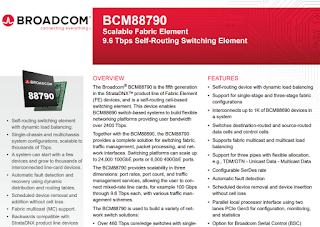LF Edge, an umbrella organization within the Linux Foundation that aims to establish an open, interoperable framework for edge computing independent of hardware, silicon, cloud, or operating system, announced Project Edge Virtualization Engine (EVE) seed code contributed by LF Edge founding member ZEDEDA.
With Project EVE, edge gateways and devices run a variety of edge workloads simultaneously, decoupling application management from the underlying hardware. Applications can be deployed in standard virtual machines (VM) or container environments and be managed through a standard set of APIs.
“With Project EVE, the goal is to create a single virtualization standard for edge devices for the industry to build around so that we can enjoy the benefits of cloud-native applications sooner rather than later,” said Said Ouissal, co-founder and CEO of ZEDEDA. “Imagine how much more impact we can achieve now that edge applications can be reliably managed and secured.”
Additionally, LF Edge welcomes new Associate and Liaison member organizations Industrial Internet Consortium (IIC), the LIONS Center at the Pennsylvania State University, OTAinfo, and University of New Hampshire’s Interoperability Lab (UNH-IOL).
"We are excited to see the LF community continue to collaborate on building unified edge solutions,” said Arpit Joshipura, general manager, Networking, IoT and Edge Computing, the Linux Foundation. “We appreciate ZEDEDA’s leadership in helping us advance On-Prem Edge IoT with initiatives like Project EVE, and are eager to showcase the broad capabilities of LF Edge onsite in Santa Clara while welcoming our newest members."
The Linux Foundation is unifying a number of its projects into a new umbrella organization to establish an open, interoperable framework for edge computing independent of hardware, silicon, cloud, or operating system. The goal is the formation of a software stack that brings the best of telecom, cloud, and enterprise (representing location, latency and mobility differentiation).
LF Edge is initially comprised of five projects: Akraino Edge Stack, EdgeX Foundry, and Open Glossary of Edge Computing, formerly stand-alone projects at The Linux Foundation. The initiative also includes a new project contributed by Samsung Electronics, which will create a hub for real-time data collected through smart home devices, and another project from ZEDEDA, which is contributing a new agnostic standard edge architecture.

“The market opportunity for LF Edge spans industrial, enterprise and consumer use cases in complex environments that cut across multiple edges and domains. We’re thrilled with the level of support backing us at launch, with 60 global organizations as founding members and new project contributions,” said Arpit Joshipura, general manager, the Linux Foundation. “This massive endorsement, combined with existing code and project contributions like Akraino from AT&T and EdgeX Foundry from Dell EMC, means LF Edge is well-positioned to transform edge and IoT application development.”
LF Edge is already supported by the following founding members: (Premier) Arm, AT&T, Baidu, Dell EMC, Dianomic Inc., Ericsson, HP Inc., HPE, Huawei, IBM, Intel, inwinStack, Juniper Networks, MobiledgeX, Netsia, Nokia Solutions, NTT, OSIsoft, Qualcomm Technologies, Radisys, Red Hat, Samsung Electronics, Seagate Technology, Tencent, WindRiver, Wipro, ZEDEDA; and (General) Advantech Co., Alleantia srl, Beechwoods Software Inc., Canonical Group Limited, CertusNet, CloudPlugs Inc., Concept Reply, DATA AHEAD AG, Enigmedia, EpiSensor, Foghorn Systems Inc., ForgeRock US Inc., Foundries.io, Hangzhou EMQ Technologies Co. Ltd., IOTech Systems Ltd., IoTium, KMC, Linaro, Mainflux, Mocana, NetFoundry, Packet, Pluribus Networks, RackN, Redis Labs, VaporIO, Vitro Technology Corp., Volterra Inc., Wanxiang Group; and (Associate) Automotive Edge Computing Consortium (AECC), Beijing University of Posts and Telecommunications (BUPT), Electronics and Telecommunications Research Institute (ETRI), Infrastructure Masons, Inc., and Project Haystack.
More about LF Edge projects:
- Akraino Edge Stack -- creating an open source software stack that supports high-availability cloud services optimized for edge computing systems and applications;
- EdgeX Foundry -- focused on building a common open framework for IoT edge computing.
- Home Edge Project -- seed code contributed by Samsung Electronics, is a new project that concentrates on driving and enabling a robust, reliable, and intelligent home edge computing framework, platform and ecosystem running on a variety of devices in our daily lives.
- Open Glossary of Edge Computing -- provides a concise collection of terms related to the field of edge computing.
- Project EVE (Edge Virtualization Engine) -- contributed by ZEDEDA, will create an open and agnostic standard edge architecture that accommodates complex and diverse on- and off-prem hardware, network and application selections.












































